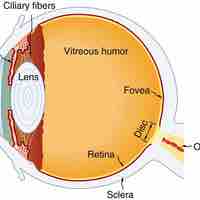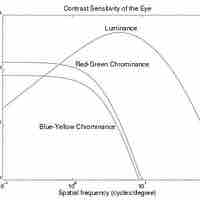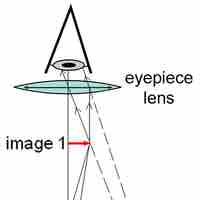Chapter 25
Vision and Optical Instruments
By Boundless

The human eye is an organ that reacts with light and allows light perception, color vision and depth perception.

Using the cone cells in the retina, we perceive images in color; each type of cone specifically sees in regions of red, green, or blue.

The human eye is a sense organ that allows vision and is capable to distinguish about 10 million colors.

In order for the human eye to see clearly, the image needs to be formed directly on the retina; if it is not, the image is blurry.

A magnifying glass is a convex lens that lets the observer see a larger image of the object being observed.
Cameras are optical devices that allow a user to record an image of an object, either on photo paper or digitally.

A compound microscope is made of two convex lenses; the first, the ocular lens, is close to the eye, and the second is the objective lens.

The telescope aids in observation of remote objects by collecting electromagnetic radiation, such as visible light.
The principle of diffraction is applied to record interference on a subatomic level in the study of x-ray crystallography.
Radiography uses x-rays to view material that cannot be seen by the human eye by identifying areas of different density and composition.
Microscopes are instruments that let the human eye see objects that would otherwise be too small.

In optical imaging, there is a fundamental limit to the resolution of any optical system that is due to diffraction.
An aberration, or distortion, is a failure of rays to converge at one focus because of limitations or defects in a lens or mirror.